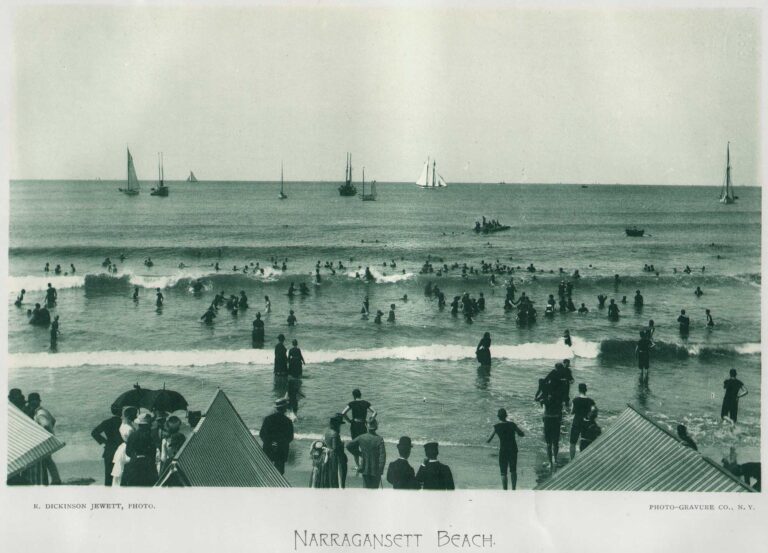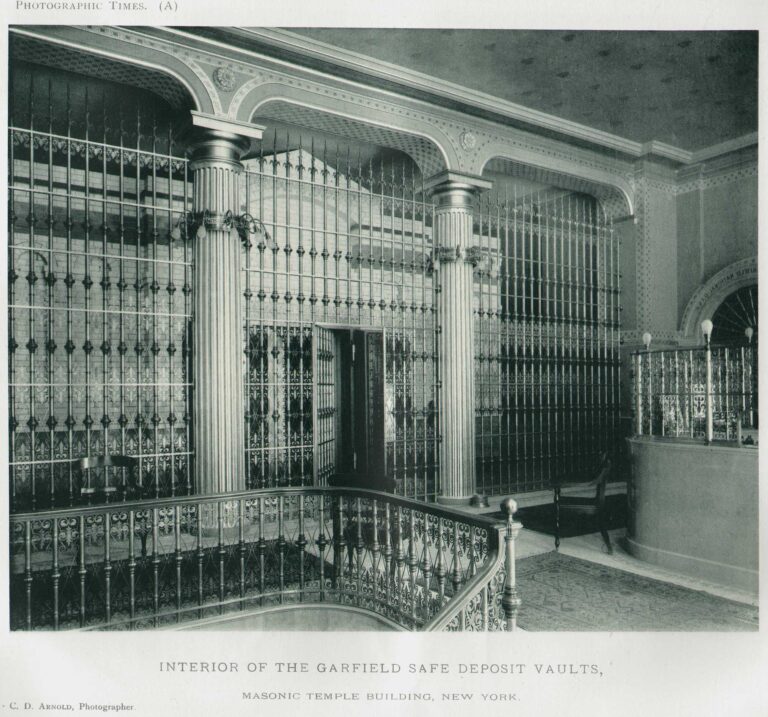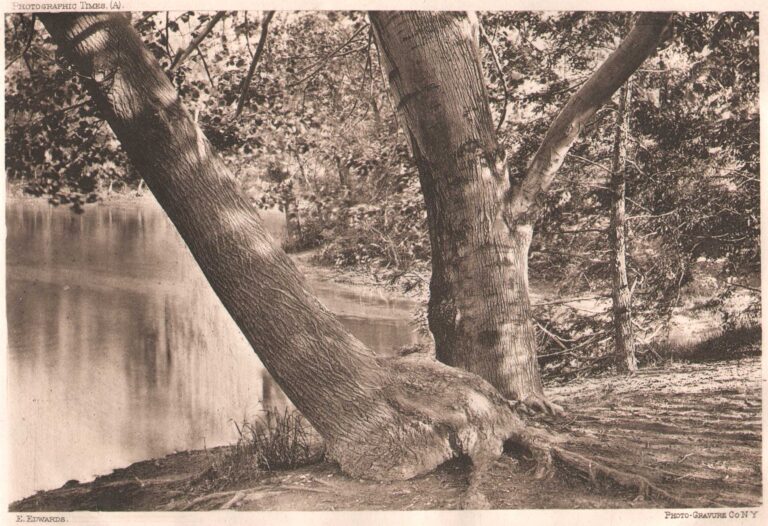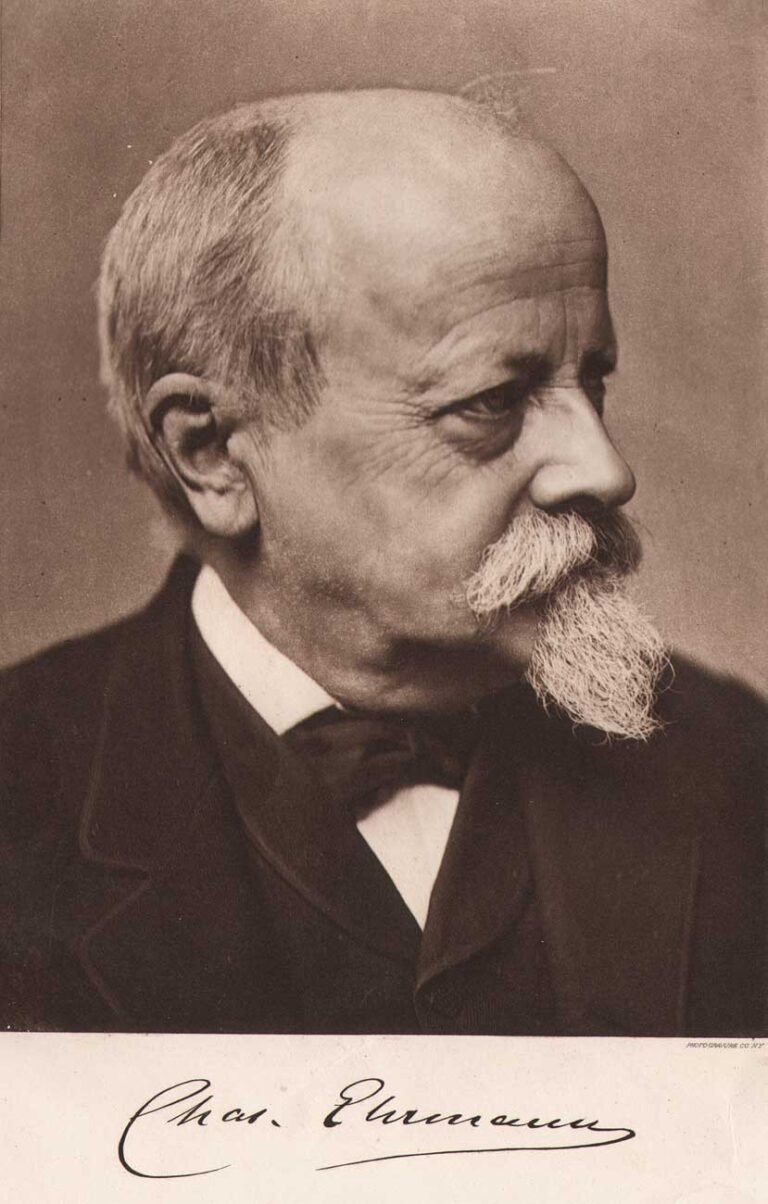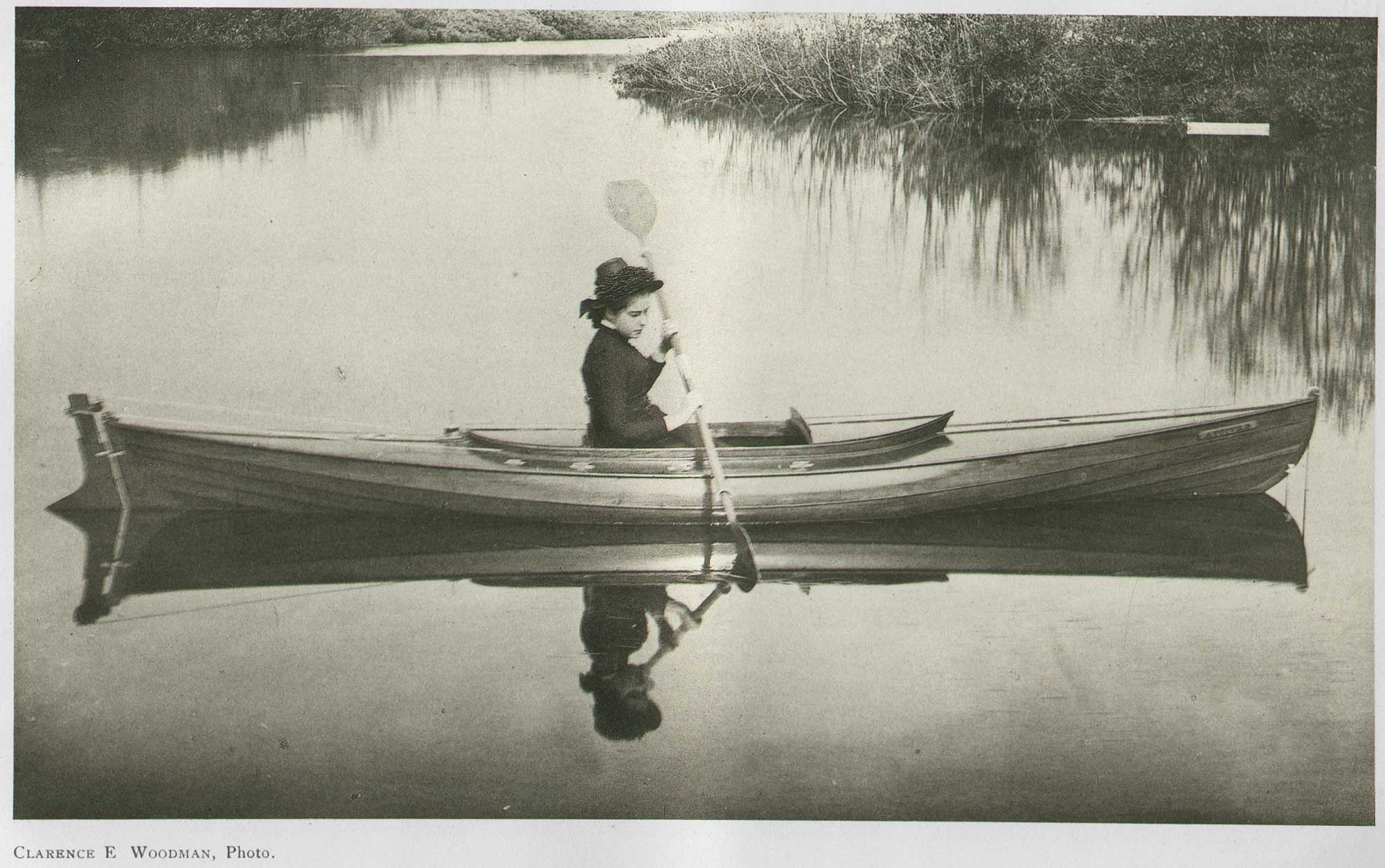
Still Life | Early Decked Canoe
Although this may look like a kayak because of the double sided paddle the woman uses for navigation, this is actually an American Cruising or Traveling Canoe. It would be considered a “Rob Roy” deck canoe or one of the models that succeeded it.
Shown this photograph, Dan Miller, curator of the online Wooden Canoe Museum, talks specifics for this canoe:
The lines from the rudder can be seen leading through the coaming, and would go to foot pedals that would be used for steering. The canoe could also be sailed, the openings for the masts can be seen, as well as what appear to be cleats mounted to the deck alongside the cockpit, and what may be a post for a tiller on the deck just aft of the cockpit. There are two deck hatches – there are probably two more which would completely cover the cockpit, and could be locked, for transporting the canoe.
Dan’s website is the definitive online resource for all those interested in early wooden canoes. A metal nameplate that unfortunately cannot be made out can be seen on the upper bow area of the boat. Further insight is welcome.
Editorial Comment for this plate:
STILL LIFE.
OUR picture this week is appropriate to the vacation days now at hand, and needs no word from us more than the bare statement of the facts concerning it.
The “scene is laid,” as the novel writer would say, at the extreme head waters of the Androscoggin River, the entrance of Rangeley Lake, Franklin County, Maine; and the photograph was made on a Carbutt “B” plate, with a quick-working lens, the exposure being by hand as rapidly as the cap could be taken off and put on again.
The picture is by the Rev. Clarence E. Woodman, Ph.D., who is well-known to all readers of THE PHOTOGRAPHIC TIMES; and was printed by the Photo-Gravure Company’s gelatine process, direct from the negative, without reduction or enlargement. (p. 395)
Rev. Clarence Eugene Woodman: 1852-1924
Father Clarence Woodman, CSP, was born in Saco, Maine, on November 1, 1852. He was baptized a Methodist but became an Episcopalian while a student at Amherst College in Massachusetts. Intending to become a minister, he attended both Trinity College and General Theological Seminary in New York in the 1870s, but converted to Catholicism with one of his professors on July 4, 1875. He entered the Paulists the following year but was forced by a bout of tuberculosis to study for the priesthood in the warmer climate of California. He made his first profession in the Paulist community on June 23, 1879, and was ordained a Catholic priest at the San Francisco cathedral on July 13, 1879. Fifteen years later that same church would be called Old Saint Mary’s and taken over by the Paulist Fathers.
A scientist as much as a Catholic priest, Father Woodman split his duties between parish work in New York and science in Washington, DC. He served as a lecturer at Catholic University in the 1890s, assisting Father George Mary Searle, CSP, at the University Observatory, and was deeply involved with the Smithsonian Institution. Participating in three eclipse expeditions around 1900, he was also given honorary degrees by Manhattan College, Saint Mary’s College, and Notre Dame. In 1911, Father Woodman was transferred to San Francisco for parish work and one year later joined the Newman Hall at Berkeley. A fine writer and homilist, he also compiled the widely respected “Manual of Prayers” in the 1880s on the request of Cardinal Gibbons and the Third Plenary Council of Baltimore.
An early Paulist leader and prominent Catholic scientist, Father Woodman was remembered by a prominent Catholic newspaper: “He was a charming man to meet, pleasant, open, gracious, and polished. Like all men of worth and splendid ability, he was most unassuming. He accomplished big things, but never alluded to them. He rose to heights of distinction and renown but accepted his honors with true reserve. Newman’s classical definition of a Christian gentleman seemed to describe him fully: ‘One who carefully avoids whatever may cause a jar or a jolt in the minds of those with whom he is cast; his great concern being to make everyone at their east and at home.'”
Father Woodman died on December 6, 1924, in Oakland, California, at the age of 72, having served for 45 years as a Paulist priest. ⎯ obituary published at Find a Grave
